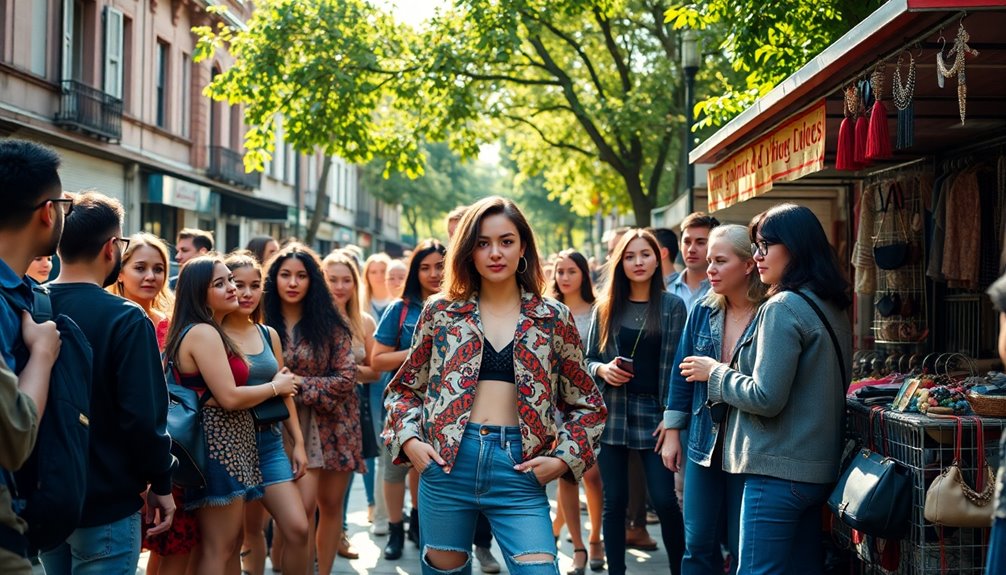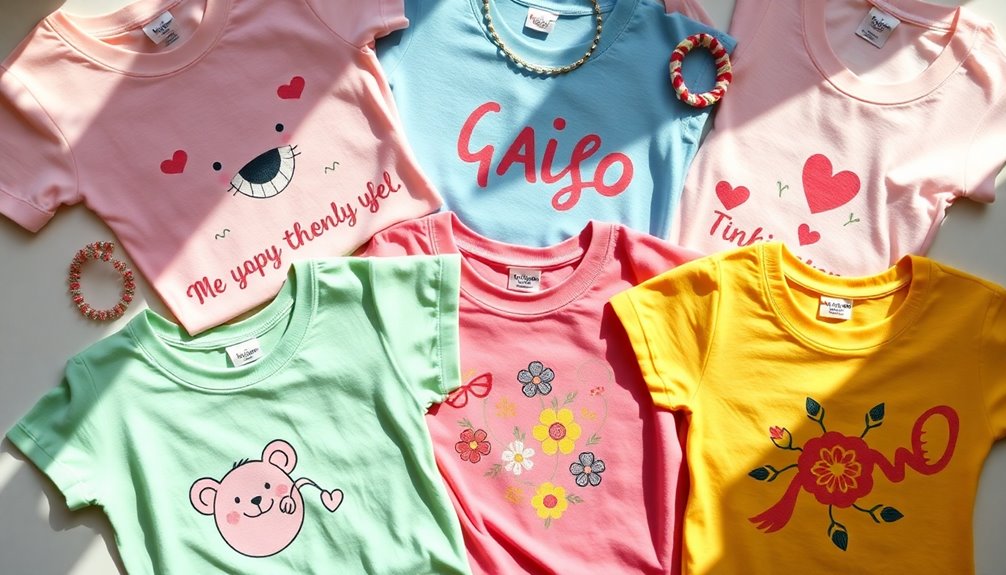Micro-influencers play a vital role in shaping fashion trends by fostering authentic connections with their followers. With a follower count between 1,000 and 100,000, they generate up to 60% higher engagement rates than larger influencers. Their relatable content makes recommendations feel like advice from friends, enhancing consumer trust. By promoting low-cost and sustainable fashion options, they accelerate the adoption of microtrends among niche audiences. This close relationship drives impulsive purchasing decisions and boosts brand loyalty. If you're curious about the deeper dynamics at play, there's more to uncover about their surprising impact on the fashion industry.
The Rise of Micro-Influencers
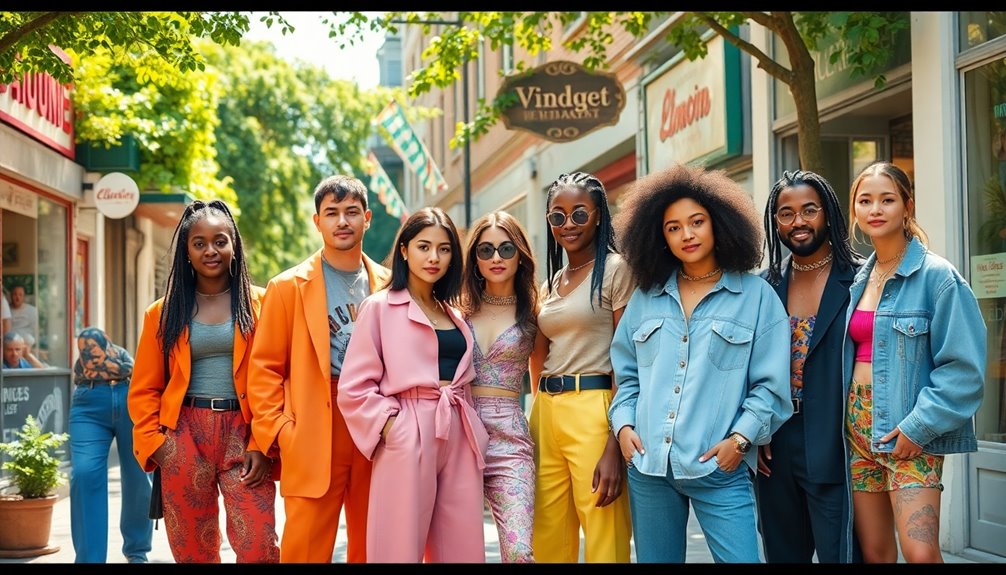
As consumers increasingly seek authenticity in their interactions, micro-influencers have surged to prominence in the fashion industry.
With follower counts between 1,000 and 100,000, these fashion influencers excel at fostering authentic connections and engaging their audiences.
In fact, 57% of e-commerce brands prefer collaborating with micro-influencers for their relatability and higher engagement rates—up to 60% more than macro-influencers.
This effectiveness translates into significant brand awareness and loyalty, with an impressive average ROI of $4.21 for every dollar spent on Instagram marketing.
As they form intimate relationships with niche audiences, micro-influencers deliver endorsements that resonate deeply, making them invaluable partners for brands looking to drive targeted outreach and achieve remarkable sales conversions.
Authenticity and Trust Factors
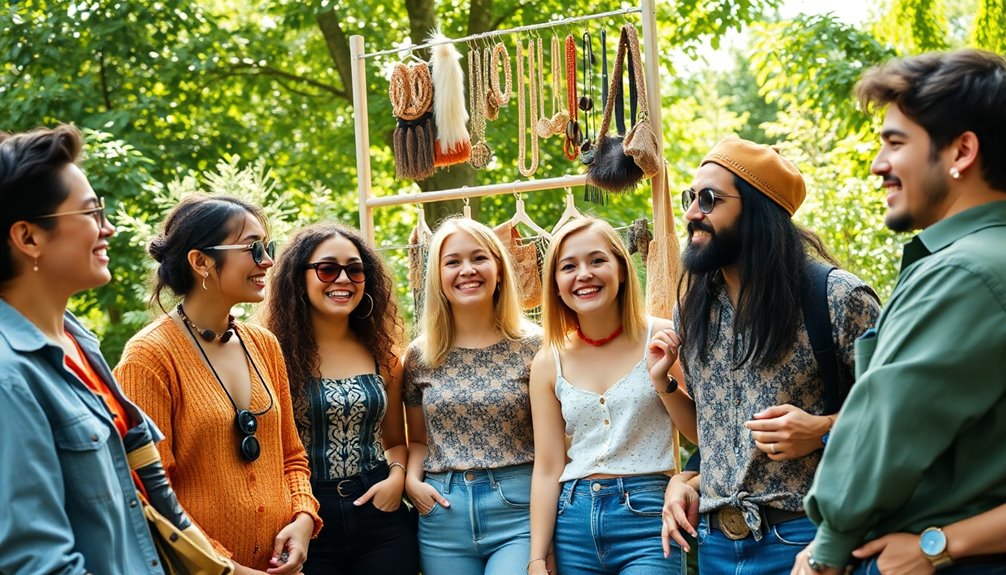
When you think about the power of micro-influencers, authenticity and trust stand out as key factors.
Their ability to build genuine connections and create relatable content makes them more credible in your eyes.
This trust translates into influence, shaping your fashion choices and driving engagement like never before.
Building Genuine Connections
Building genuine connections is essential in today's fashion landscape, where authenticity drives consumer trust.
Micro-influencers, with their 1,000 to 100,000 followers, create personalized content that resonates deeply with their audiences. Their engagement rates are up to 60% higher than those of macro-influencers, showcasing the power of trust and authenticity in their endorsements.
When consumers see micro-influencers as relatable figures, they're more likely to view recommendations as advice from friends rather than traditional advertising.
Brands that align their values with these influencers can foster long-term relationships, enhancing credibility and driving consumer loyalty.
Ultimately, these genuine connections not only influence fashion trends but also create a community of trust that benefits everyone involved. Furthermore, practicing self-care can enhance the authenticity of micro-influencers, as they are more likely to project a positive and genuine image when they prioritize their well-being.
Relatable Content Appeal
How do micro-influencers create such strong bonds with their followers? They excel at sharing relatable content that resonates deeply with their audience.
With follower counts between 1,000 and 100,000, micro-influencers foster genuine connections, leading to higher consumer trust. Studies show that 88% of consumers prioritize authenticity, making the authentic endorsements from these influencers far more appealing than traditional ads.
Their engagement rates are impressive too—up to 60% higher than macro-influencers—demonstrating their ability to create content that feels personal and trustworthy.
When brands partner with micro-influencers, they often see a staggering 321% return on investment, proving that these influencers' recommendations feel more like advice from a friend, ultimately driving product interest and purchases. Additionally, consumer trust is a critical factor in the effectiveness of micro-influencer marketing strategies.
Credibility and Influence
As consumers increasingly seek authenticity in their purchasing decisions, micro-influencers have emerged as trusted voices in the fashion industry.
With follower counts between 1,000 and 100,000, they generate engagement rates up to 60% higher than macro-influencers, showcasing their credibility and relatability.
About 88% of consumers prioritize authenticity, making micro-influencers' genuine endorsements particularly effective in shaping fashion trends.
Brands collaborating with them enjoy an impressive ROI of $4.21 for each dollar spent, underlining the trust these influencers build with their audiences.
Additionally, 69% of consumers prefer influencer endorsements over traditional ads, reflecting the powerful impact of micro-influencers on fashion purchases.
Their ability to foster authentic connections is why 57% of e-commerce brands favor them for marketing strategies. Furthermore, the trust creation established by these influencers can significantly enhance brand loyalty and consumer engagement over time.
Engagement Metrics and Impact
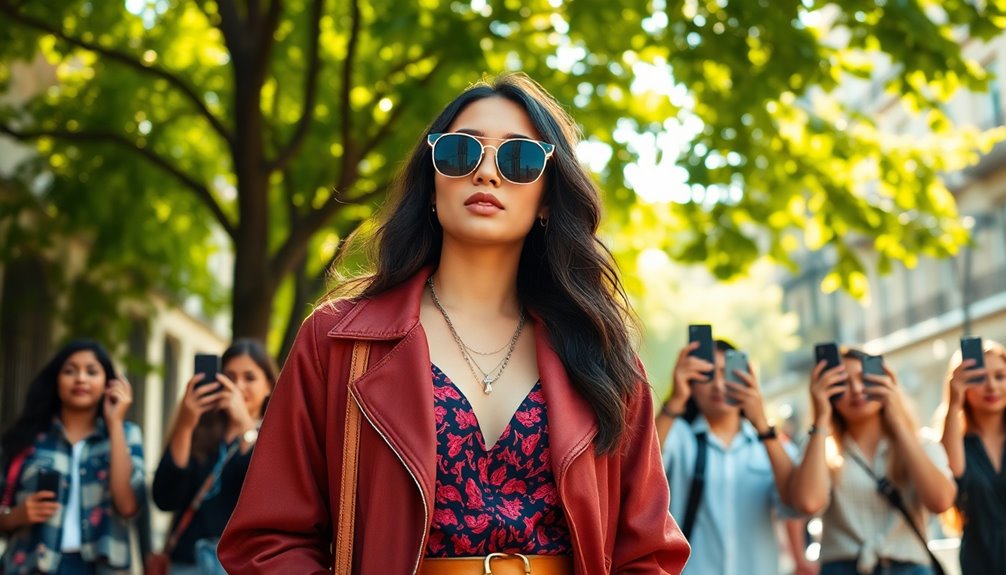
While many brands seek the broad reach of macro-influencers, the engagement metrics of micro-influencers reveal a different story. Micro-influencer campaigns generate engagement rates up to 60% higher, making them more effective at amplifying fashion trends.
With 88% of consumers prioritizing authenticity, these influencers build credibility around the trends they promote. This authenticity not only enhances brand interactions but also considerably impacts consumer buying behavior; posts from micro-influencers drive 76% of users to make purchases.
Brands often see up to 11 times higher ROI from collaborating with them, showcasing the power of targeted outreach. Ultimately, engagement metrics like likes and shares are crucial, as micro-influencers foster genuine connections that encourage impulsive buying decisions.
Social Media Platform Dynamics
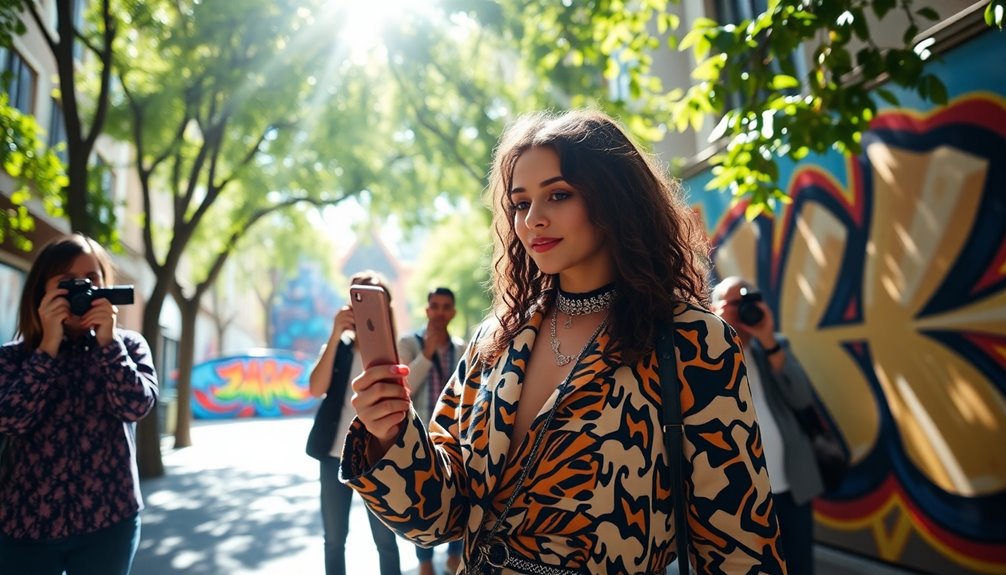
Micro-influencers are reshaping the landscape of social media marketing, particularly within the fashion industry. Their impact is profound, especially on platforms where engagement rates soar.
Here's why they drive fashion trends effectively:
- Higher Engagement Rates: Micro-influencers boast engagement rates up to 60% higher than macro-influencers.
- Targeted Reach: 57% of ecommerce brands prefer collaborating with them for authentic connections.
- Platform Utilization: 72% of marketers use Instagram for influencer marketing, while 66% leverage TikTok.
- Strong ROI: Micro-influencer campaigns on Instagram yield an average ROI of $4.21 for every dollar spent.
Trends vs. Microtrends
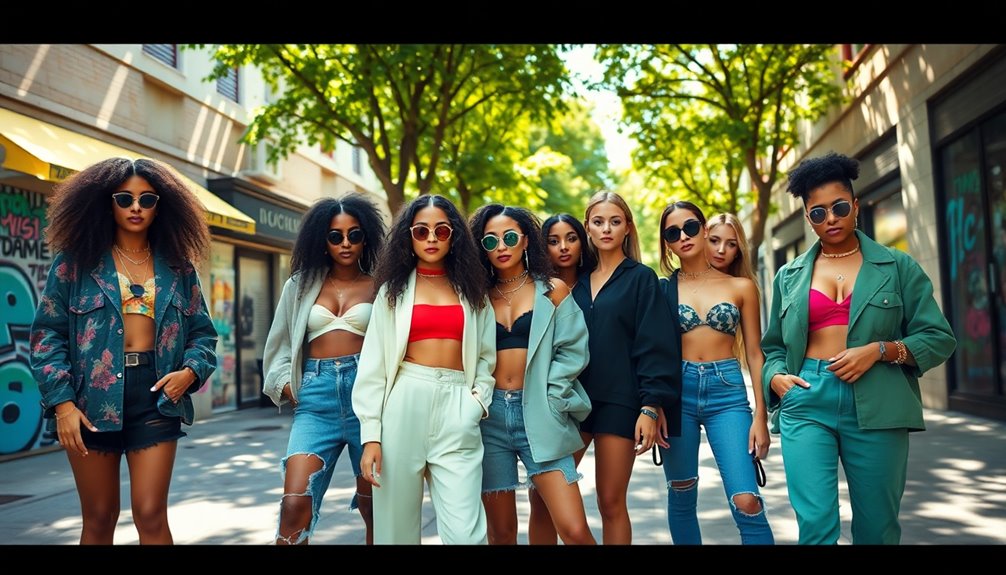
Fashion trends have evolved dramatically in recent years, shifting from long-lasting styles to fleeting microtrends that dominate the scene for just a few months.
Unlike traditional trends that last around a decade, microtrends are defined by rapid shifts in consumer preferences, often sparked by micro-influencers.
These influencers connect authentically with their niche audiences, creating a buzz around singular clothing items that quickly capture attention.
The fashion industry capitalizes on this momentum, as brands leveraging micro-influencers enjoy increased visibility and sales.
With engagement rates up to 60% higher than those of macro-influencers, it's clear that micro-influencers play a pivotal role in both launching and letting go of microtrends, shaping your wardrobe choices in real-time.
Fast Fashion Influence
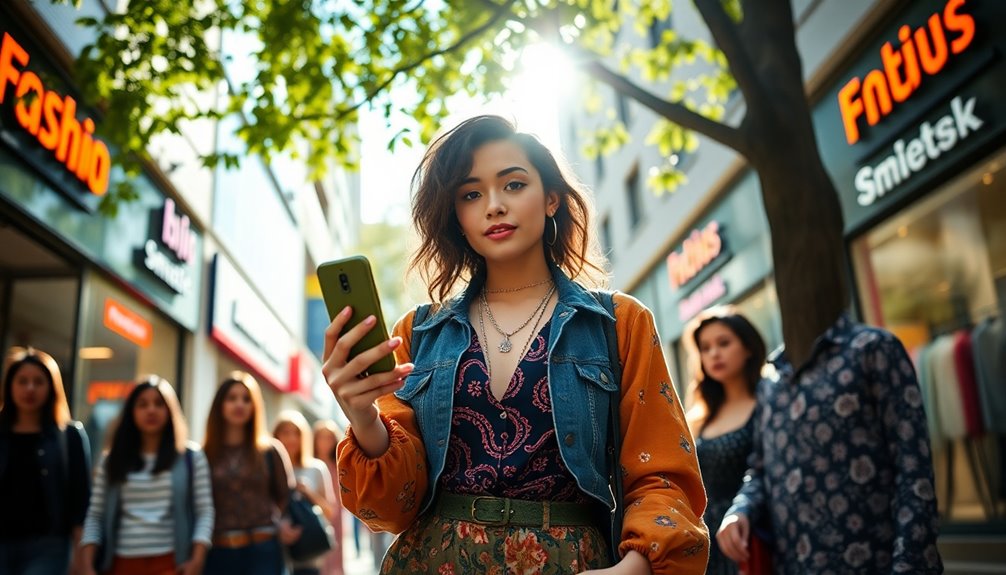
You've probably noticed how quickly trends come and go in the fashion world, thanks to micro-influencers.
While their ability to spark rapid trend adoption is impressive, it also raises important ethical concerns about sustainability and consumerism.
As you explore this influence, it's essential to take into account both the excitement of new styles and the implications of fast fashion.
Rapid Trend Adoption
As social media continues to evolve, the influence of micro-influencers in fast fashion becomes increasingly evident. They drive rapid trend adoption by sharing authentic content that resonates with niche audiences. This results in quick spikes in consumer demand, making their recommendations incredibly effective.
Here are four ways they impact fast fashion:
- Higher Engagement: Micro-influencers have engagement rates up to 60% higher than macro-influencers.
- Impulse Purchases: Their relatable recommendations encourage impulsive buying behavior.
- Brand Partnerships: Fast fashion brands like Shein leverage their reach to promote low-cost garments.
- Trend Cycle Acceleration: They contribute to the rapid turnover of trends, influencing consumer preferences and behaviors.
This dynamic not only shapes fashion trends but also fosters a culture of overconsumption.
Ethical Concerns Rising
The rapid trend adoption fueled by micro-influencers raises important ethical concerns in the fast fashion industry. As you notice the constant stream of new styles, consider how this culture promotes overconsumption and undermines personal style.
Fast fashion brands like Shein contribute considerably to environmental damage, with millions of tons of waste projected annually. Influencer partnerships often attempt to gloss over these issues, but public backlash over unethical labor practices and sustainability can't be ignored.
When influencers sever ties with brands over ethical concerns, it highlights the growing demand for transparency. Building consumer trust is essential, and without genuine commitment to ethical practices, the industry risks losing credibility and your support as a conscious consumer.
Ethical Considerations in Fashion
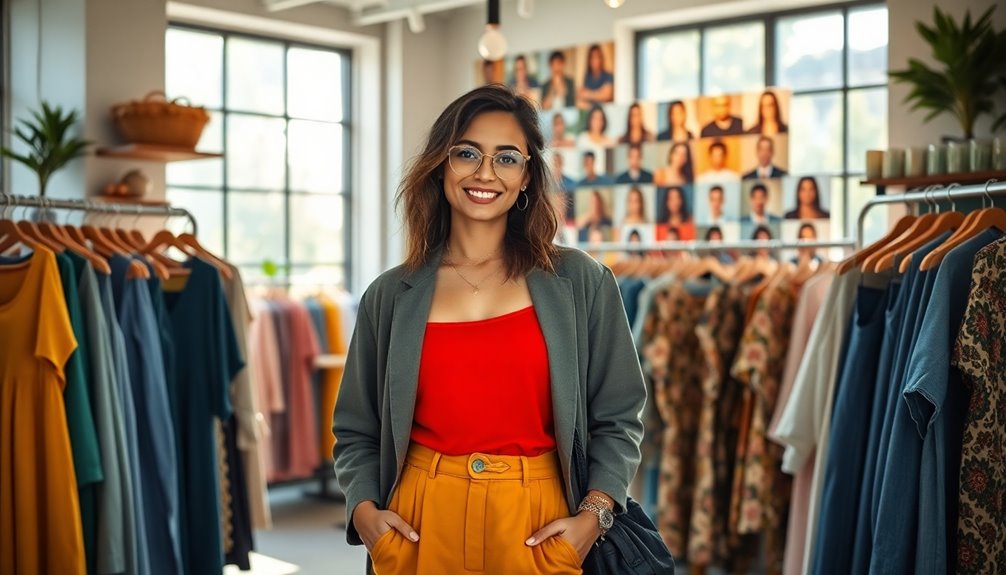
While many consumers are becoming more aware of the ethical implications of their fashion choices, the rise of micro-influencers has significantly shaped this landscape. They play an essential role in promoting ethical fashion and sustainable practices, especially among Gen Z consumers who value authenticity.
Here are some ways micro-influencers impact consumer preferences:
- They showcase upcycled and thrifted looks, encouraging eco-friendly habits.
- Their endorsements of ethical brands foster transparency and accountability in the industry.
- They challenge fast fashion norms, promoting alternatives that prioritize ethical production.
- Their higher engagement rates make their messages about sustainability more impactful than traditional ads.
Micro-influencers are leading a movement that holds brands accountable, making ethical fashion the new trend.
Sustainable Fashion Initiatives
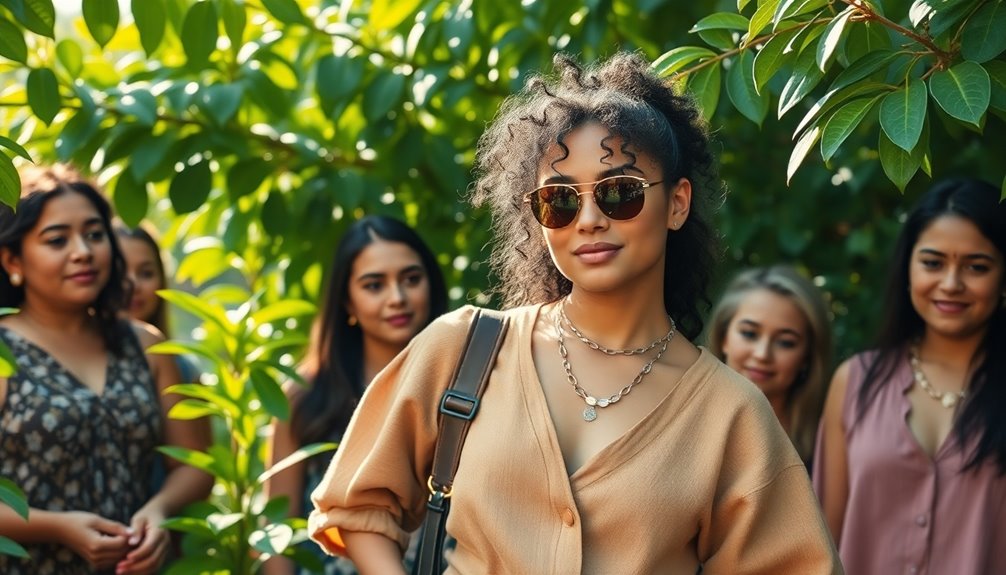
Micro-influencers are transforming the landscape of sustainable fashion initiatives by championing eco-friendly practices and ethical brands. You'll find that their authentic recommendations resonate deeply with eco-conscious consumers, driving a shift in consumer preferences. With 60% of shoppers willing to pay more for ethically produced items, their influence is undeniable. By promoting upcycling and secondhand shopping through popular hashtags like #upcycling, they inspire others to embrace sustainable practices.
| Aspect | Micro-Influencers | Impact on Consumer Behavior |
|---|---|---|
| Authenticity | Strong personal connection | Increases trust and loyalty |
| Engagement | Community-driven | Fosters eco-conscious choices |
| Recommendations | Focus on sustainability | Encourages ethical purchases |
| Consumer Preferences | Shift towards eco-friendly | Boosts ethical brand visibility |
Future of Influencer Marketing
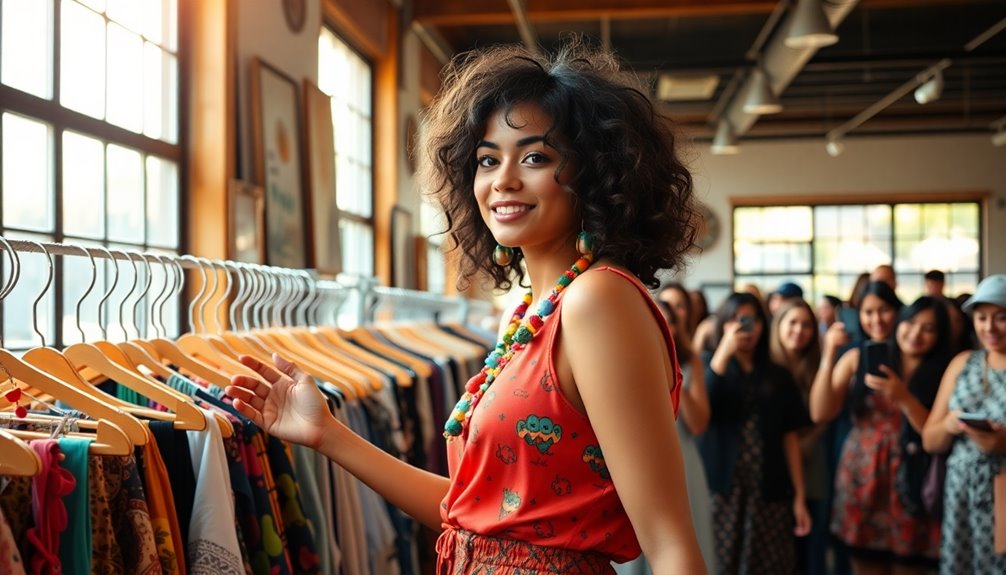
- Increased Investment: Brands are shifting towards long-term partnerships with micro-influencers for genuine connections.
- Video Dominance: Platforms like TikTok are leading the way, using video content to capture higher engagement rates.
- AI Integration: Utilizing AI and data analytics helps brands select the right micro-influencers, optimizing digital marketing strategies.
- Focus on Transparency: Consumers demand authenticity, pushing brands to guarantee clear, honest endorsements in their influencer collaborations.
Additionally, the latest updates in marketing strategies indicate that micro-influencers are becoming pivotal in shaping consumer perceptions and trends.
These trends highlight how micro-influencers will shape the landscape of influencer marketing, emphasizing authenticity and engagement.
Frequently Asked Questions
How Do Influencers Affect Fashion Trends?
Influencers affect fashion trends by shaping your perceptions of style and brand choices.
When you see them wearing certain outfits or promoting products, it often inspires you to adopt those trends. Their authentic connections with followers make their recommendations feel relatable, increasing your trust in their choices.
As you engage with their content, you're more likely to purchase items they endorse, helping to drive the popularity of specific fashion styles and brands.
What Is the Impact of Micro-Influencers?
Micro-influencers have a significant impact on consumer behavior and brand engagement.
Since they connect authentically with their followers, you're more likely to trust their recommendations. With higher engagement rates, they effectively drive interest and purchasing decisions.
When brands collaborate with micro-influencers, they often see impressive returns on investment, making these partnerships a smart strategy.
You'll find that their influence is reshaping the fashion landscape, creating a more personalized shopping experience for you.
How Do Influencers Impact Trends?
Imagine scrolling through your feed, a sea of stylish outfits catching your eye. Influencers shape trends by showcasing fresh styles and unique looks that resonate with you.
They spark your interest, making you feel connected to the latest fashion. As you see their authentic posts, you're more likely to adopt these trends, turning fleeting moments into must-have items.
Their genuine engagement creates a ripple effect, influencing not just your choices, but those of countless others.
How Does Social Media Drive Fast Fashion?
Social media drives fast fashion by creating a rapid cycle of trends that you can easily access and engage with.
Platforms like TikTok and Instagram showcase visually appealing content that prompts impulsive buying. With brands releasing new items daily, you're often swayed by what's trending in your feed.
As you scroll, you see countless options that cater to your preferences, influencing your choices and encouraging you to buy the latest styles almost instantly.
Conclusion
In the whirlwind of fashion, micro-influencers are the quiet storm, shaping trends in unexpected ways. Their authenticity and genuine connections create a ripple effect, turning small waves into tidal changes in the industry. As you navigate this vibrant landscape, keep an eye on these trendsetters; they're not just followers but leaders in sustainable and ethical fashion. The future of influencer marketing is bright, and it's in your hands to embrace the change they inspire.
